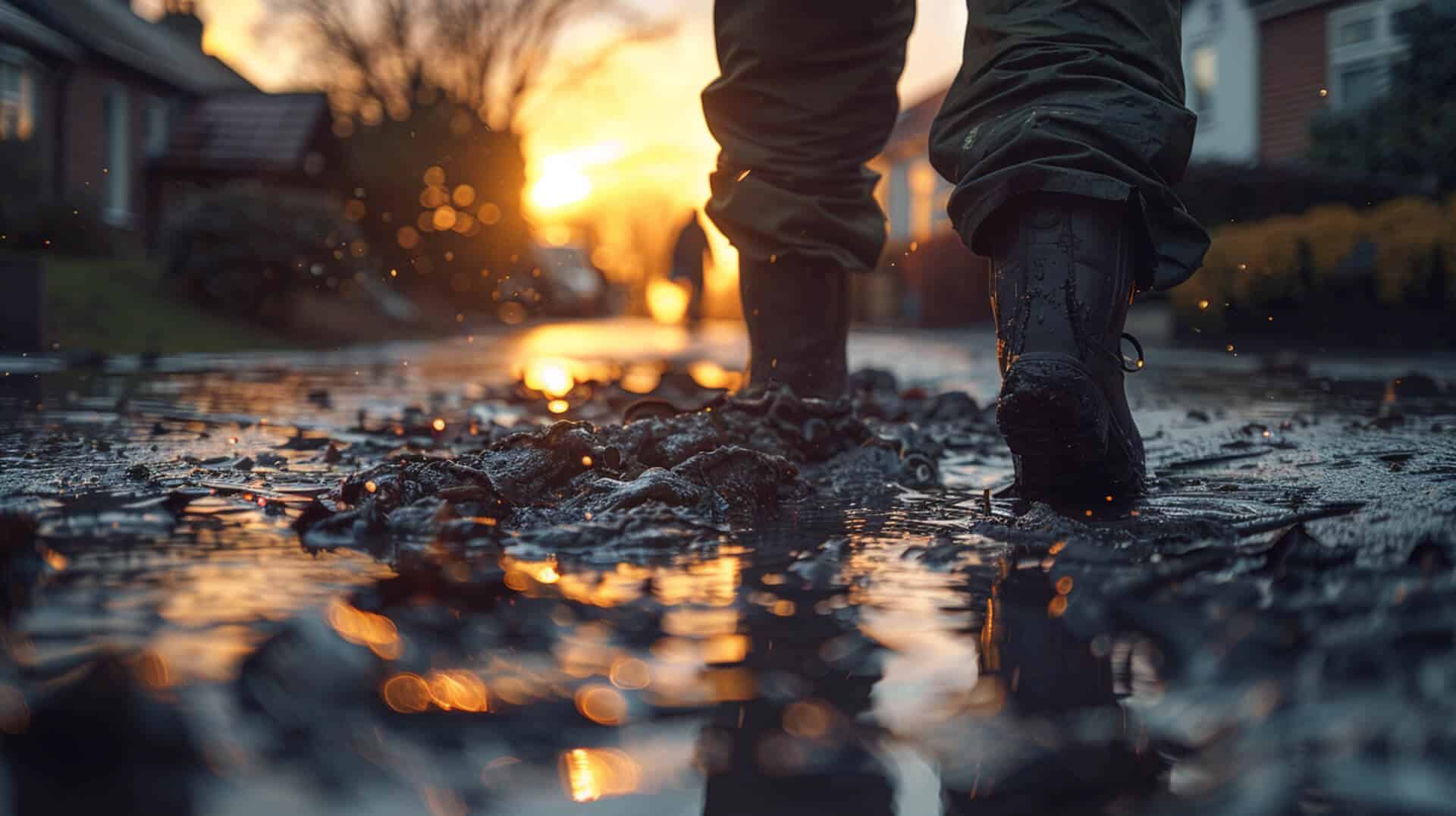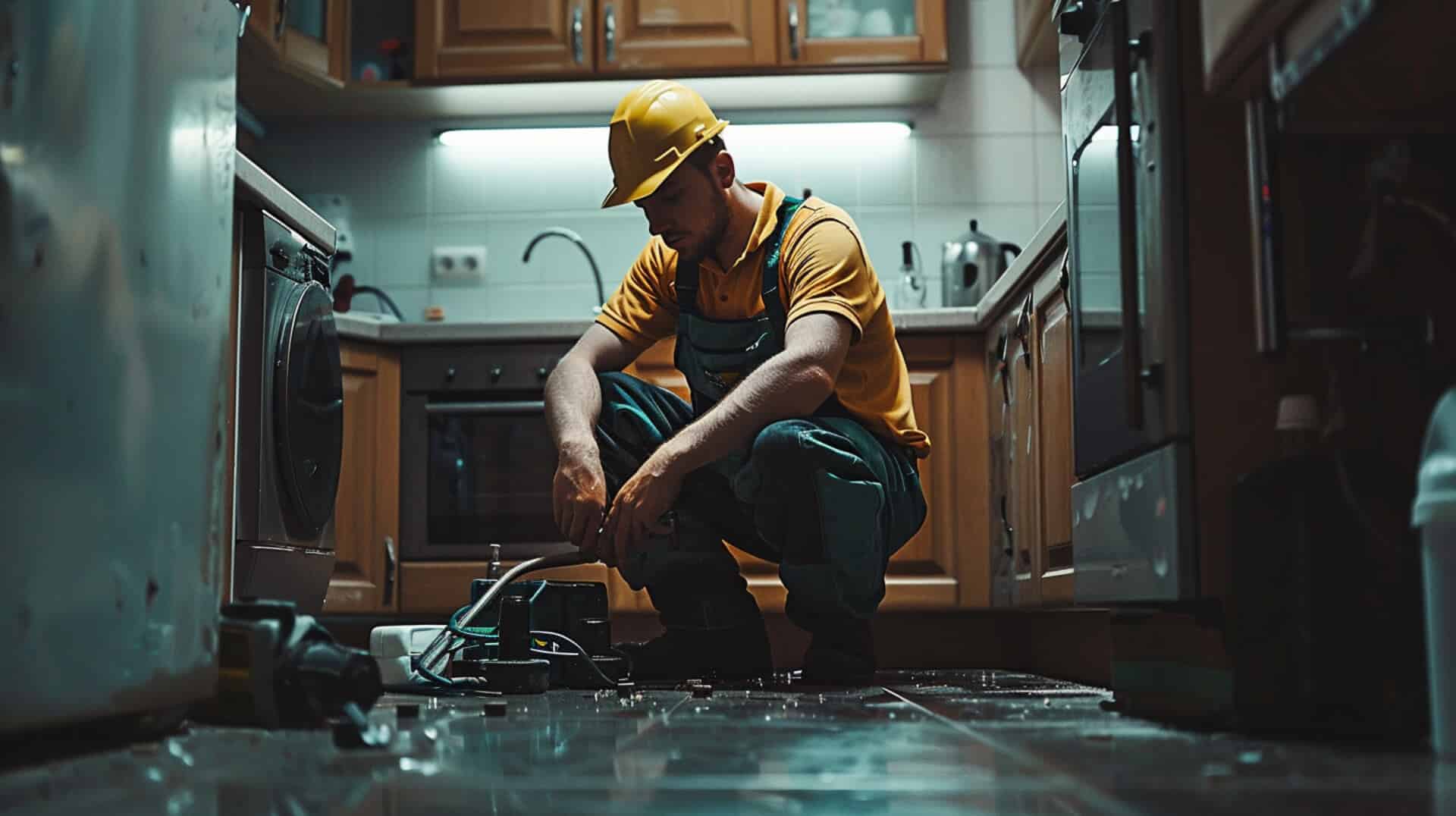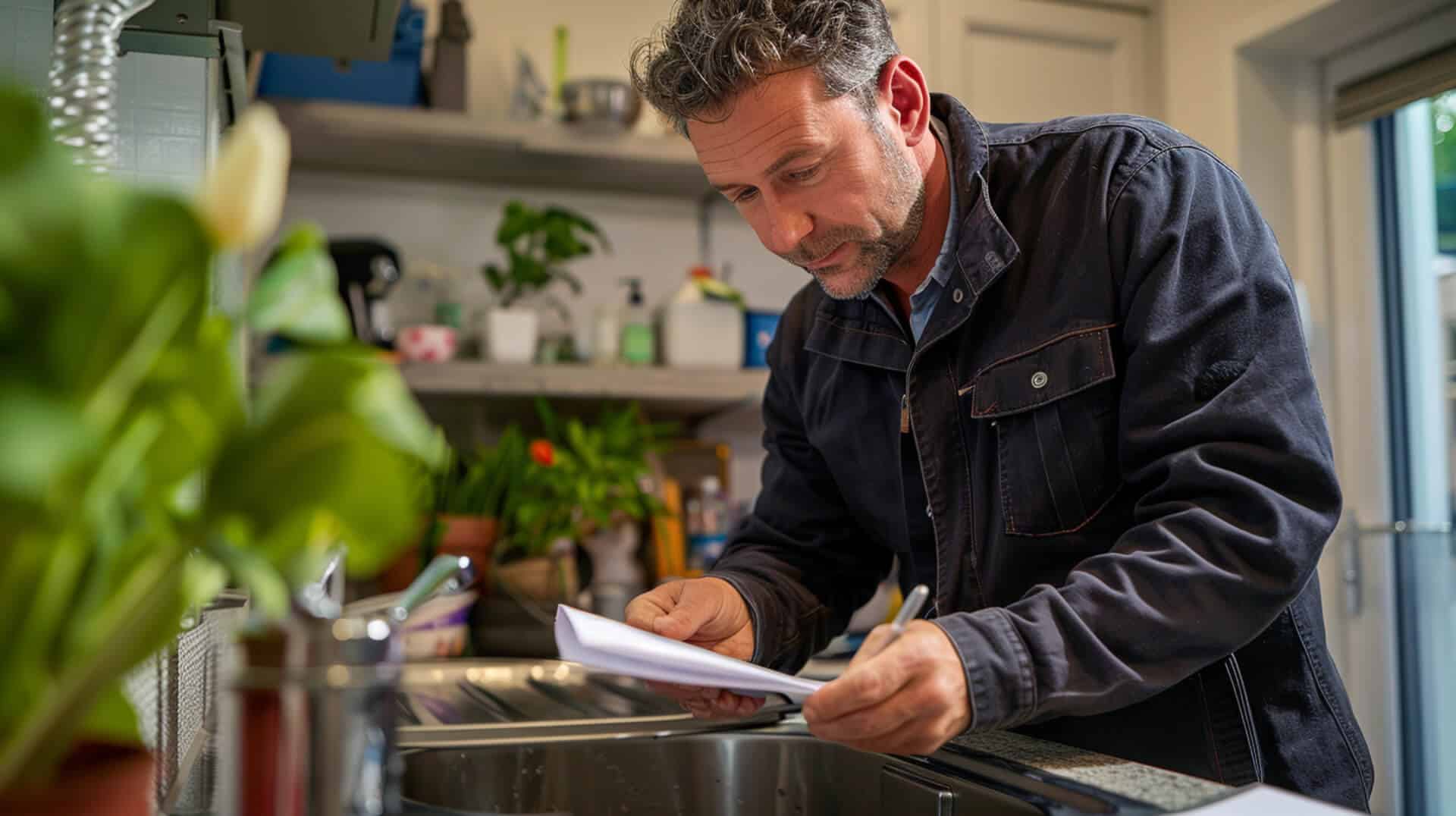 How Is A Drain Root Intrusion Survey Conducted
How Is A Drain Root Intrusion Survey Conducted

When you’re responsible for the upkeep of property, understanding the intricacies of maintenance is paramount. One critical aspect often overlooked is the sewer and drainage system, particularly the potential for drain root intrusion. A Drain Root Intrusion Survey is a specialised assessment designed to detect the presence of tree roots within your sewer lines, which can compromise the system’s integrity.
Why Conduct a Drain Root Intrusion Survey?
Root intrusion occurs when tree roots, in their quest for moisture, infiltrate sewer lines, leading to blockages and potential structural damage. The primary objectives of conducting a survey are to identify the presence of roots, assess the extent of the intrusion, and determine the appropriate remediation measures. This preemptive approach is essential to maintaining the functionality of your sewer systems and avoiding costly repairs.
Benefits for Stakeholders
For property owners, business owners, and facility managers, the benefits of a Drain Root Intrusion Survey are manifold. It provides a clear picture of the underground infrastructure, enabling informed decisions on maintenance and repairs. Early detection through these surveys can lead to significant cost savings by addressing issues before they escalate into major problems. By ensuring the health of your drainage system, you’re not only preserving the property’s value but also safeguarding against disruptions to daily operations.
Recognising the Signs of Root Intrusion
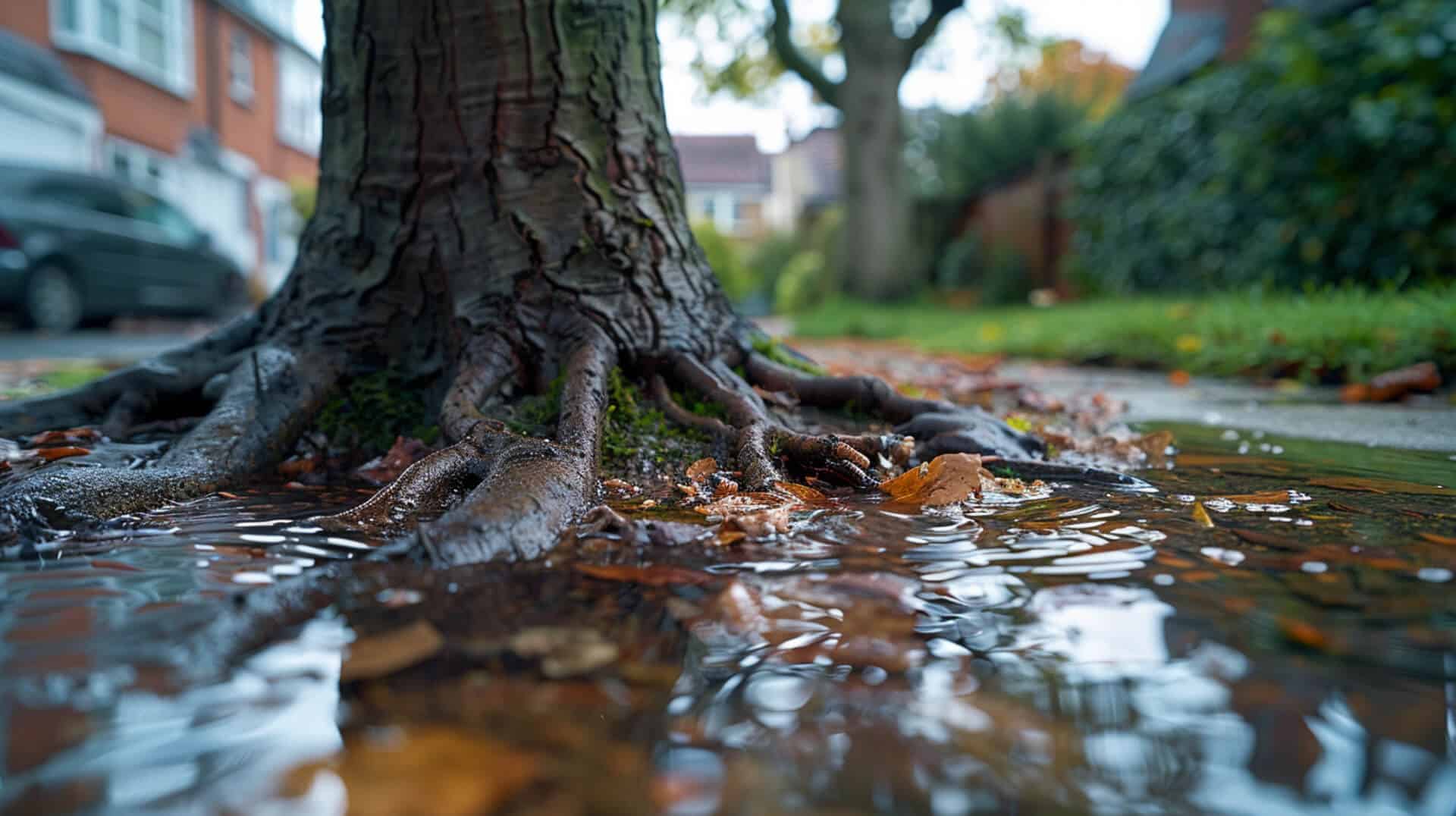
Recognising early indicators of root intrusion in your drainage system is essential for maintaining its integrity and function. Symptoms such as slow drainage and sewage backup are not just inconveniences; they signal deeper issues that may require professional attention.
Early Indicators of Root Intrusion
Root intrusion may manifest through various signs in your drainage system:
- Slow Drainage: A noticeable decrease in water flow rate from sinks and toilets can indicate blockages caused by roots.
- Gurgling Sounds: Unusual noises from the plumbing system often precede more severe symptoms.
- Sewage Backup: The presence of sewage in places it shouldn’t be is a clear sign of a compromised sewer line.
Symptoms Signalling Deeper Issues
These symptoms are often the first noticeable signs that tree roots may be affecting your sewer lines:
- Sinkholes and Ground Depression: Visible changes in ground elevation near sewer lines suggest root movement and growth.
- Odours and Increased Insect Activity: Unpleasant smells and unusual insect behaviour can indicate a breach in the sewer line integrity.
Environmental Factors and Root Intrusion
Environmental conditions play a significant role in root intrusion:
- Soil Moisture Levels: Trees seek moisture, leading roots towards the nutrient-rich environment of sewer lines.
- Seasonal Changes: Growth patterns can be influenced by seasonal variations, potentially exacerbating intrusion issues.
Understanding these signs and their implications allows for timely intervention, potentially saving you from costly repairs and extensive damage to your property’s infrastructure. Regular inspections and prompt responses to these early signs are crucial in managing root intrusion effectively.
Assessing Pipe Vulnerability to Root Intrusion
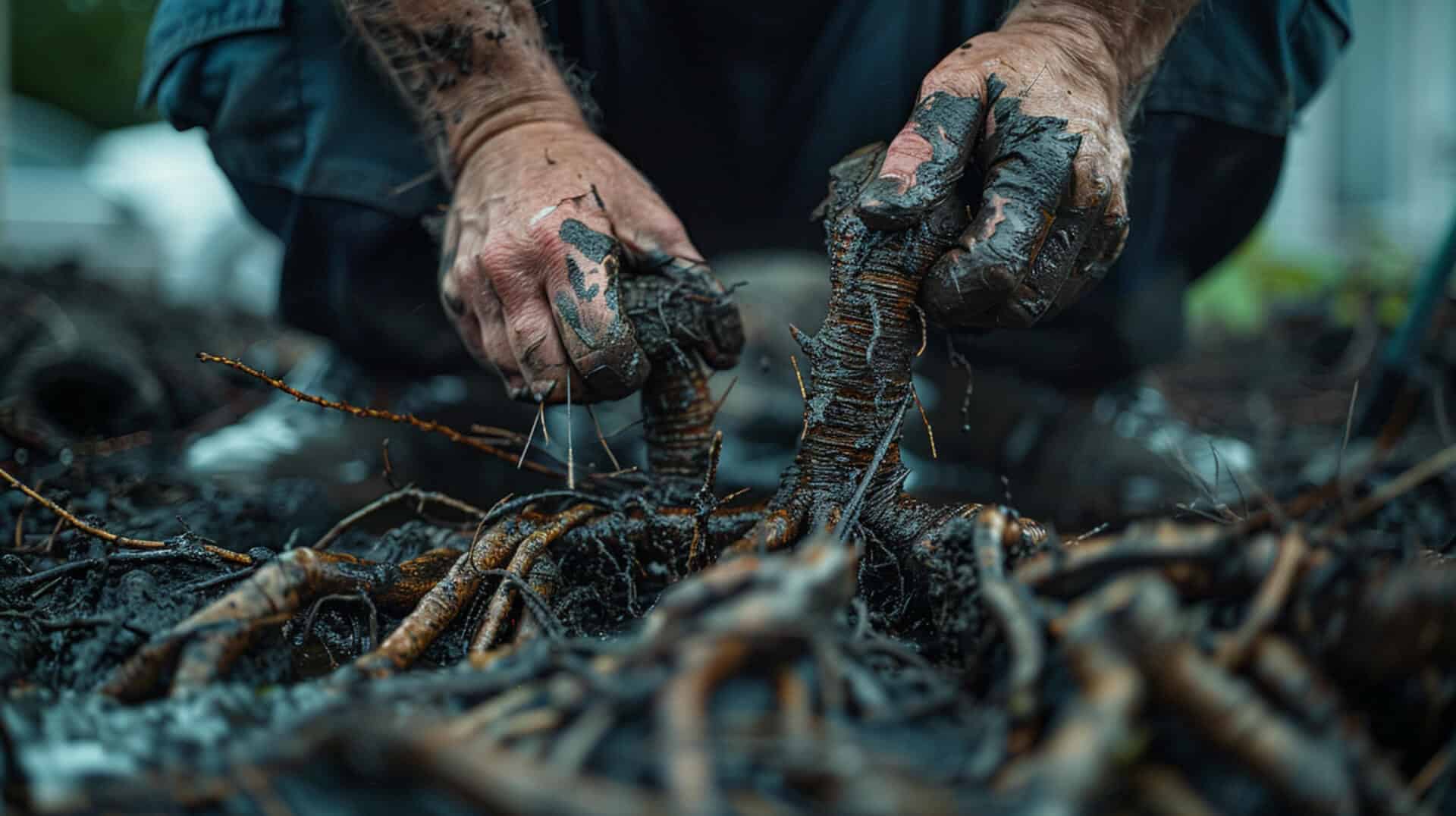
Understanding the susceptibility of different pipe materials to root intrusion is crucial for maintaining the longevity of sewer systems. Terra cotta and cast iron pipes, commonly found in older constructions, are particularly prone to this issue.
Susceptibility of Terra Cotta and Cast Iron Pipes
Terra cotta and cast iron pipes are more vulnerable to root intrusion due to:
- Joints and Seals: These materials often have joints that can deteriorate over time, creating entry points for roots.
- Corrosion: Cast iron pipes can corrode, weakening their structure and allowing roots to penetrate.
Mitigating Root Intrusion Risks
To reduce the risk of root intrusion, consider the following construction practices:
- Pipe Material Selection: Opting for materials less prone to corrosion and joint deterioration, such as PVC or ABS, can enhance the resilience of sewer lines.
- Joint Integrity: Ensuring that joints are well-sealed and structurally sound can prevent root entry.
Impact of Material Choice on Sewer Longevity
The longevity of sewer systems is significantly affected by material choice:
- Durability: Modern materials like PVC offer greater resistance to root intrusion and environmental stressors.
- Maintenance Requirements: Pipes less susceptible to intrusion require less frequent maintenance and are more cost-effective in the long run.
By selecting appropriate materials and employing robust construction practices, you can effectively mitigate the risk of root intrusion and ensure the durability of your sewer systems.
Utilising Advanced Technology in Drain Root Intrusion Surveys
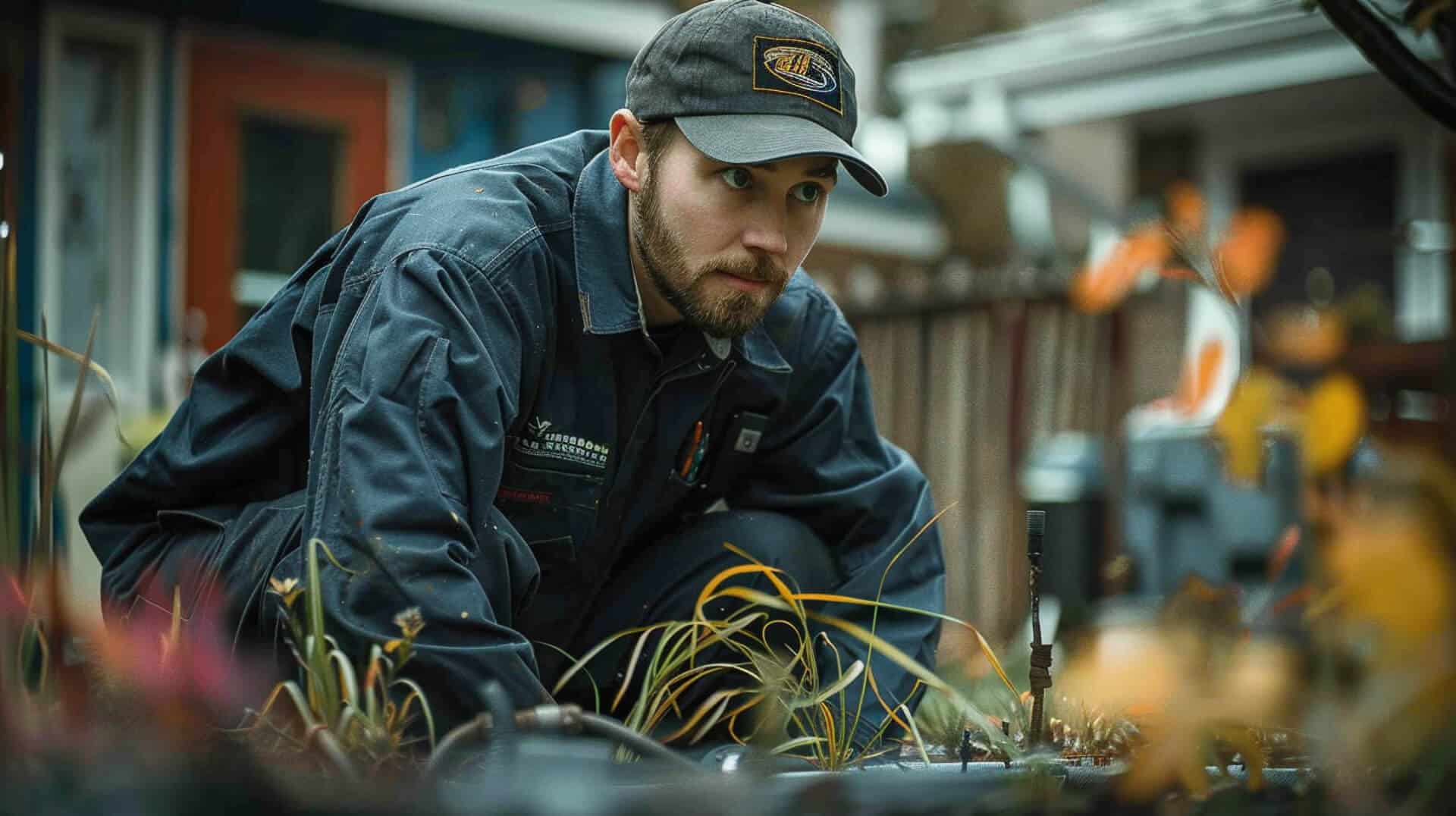
In the realm of drain maintenance, technological advancements have significantly improved the process of diagnosing root intrusion. Closed-Circuit Television (CCTV) surveys stand at the forefront of these developments, offering a non-invasive yet highly effective means of inspection.
The Pivotal Role of CCTV in Diagnosing Intrusion
CCTV technology is instrumental in accurately identifying root intrusion within sewer lines. By inserting a high-resolution camera into the drainage system, specialists can visually inspect the internal conditions of pipes, detecting the presence and extent of root infiltration without the need for excavation.
Advantages of Non-Destructive Survey Methods
Non-destructive methods, such as CCTV surveys, offer several benefits:
- Preservation of Property: They eliminate the need for disruptive digging, preserving your landscape and infrastructure.
- Cost Efficiency: These methods reduce the overall cost of diagnosis and repair by pinpointing specific problem areas.
- Time-Saving: Swift identification of issues leads to quicker resolutions and less downtime for your drainage system.
Enhancing Survey Efficiency with Technology
The integration of technology into root intrusion surveys enhances efficiency by:
- Real-Time Analysis: Live feed from the camera allows for immediate assessment and decision-making.
- Detailed Documentation: High-quality footage provides a record that can be reviewed to track the progression of intrusion over time.
By employing advanced technologies like CCTV, you can ensure a thorough and precise diagnosis of root intrusion, leading to more targeted and effective solutions for maintaining the health of your drainage systems.
Conducting a Drain Root Intrusion Survey
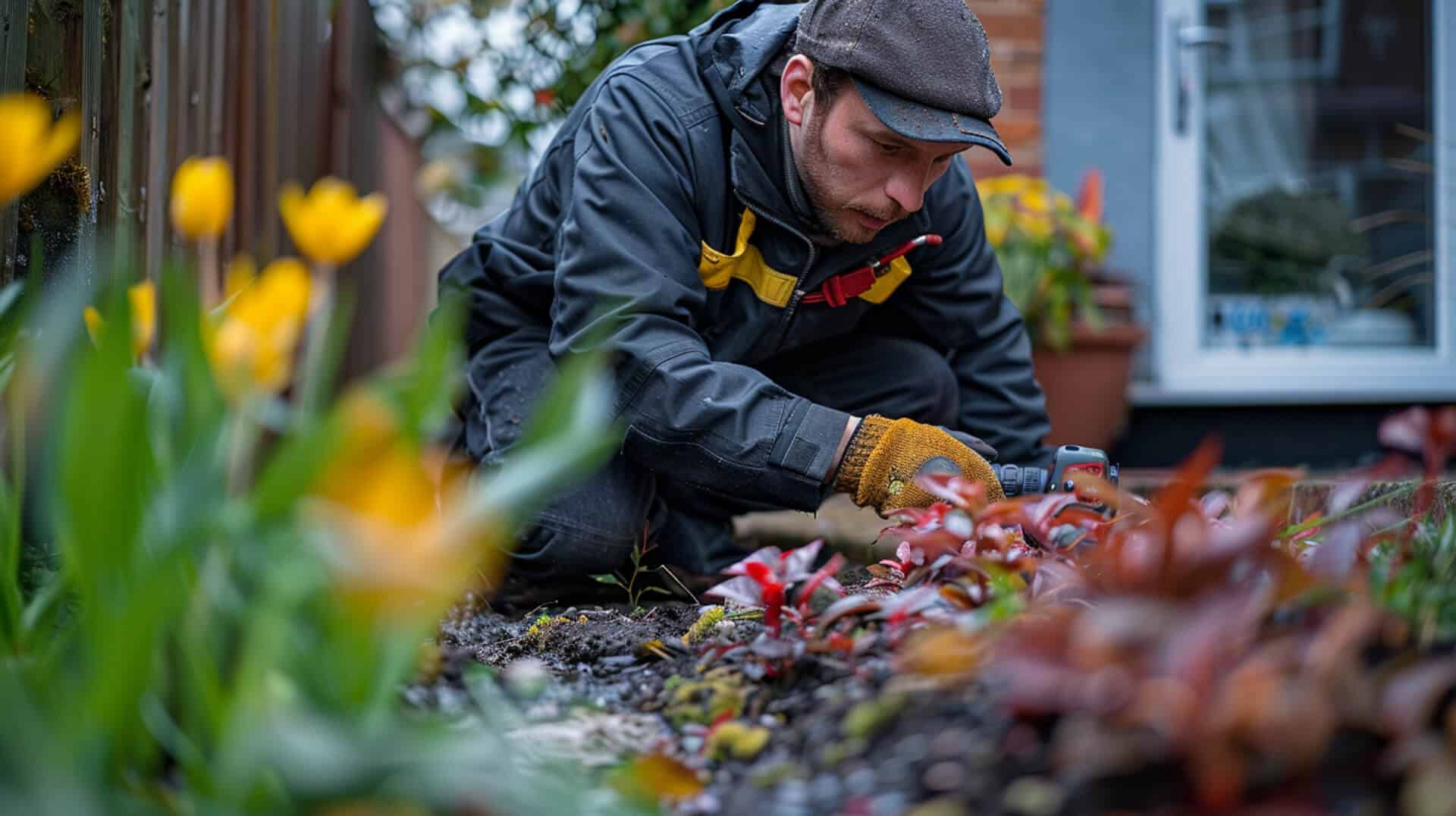
When you suspect root intrusion in your drainage system, a detailed survey conducted by professionals can provide clarity and direction for remediation. The process is meticulous and involves several key steps to ensure accurate results.
Preliminary Steps in Survey Preparation
Before the survey begins, professionals undertake several preparatory actions:
- Site Assessment: Evaluating the area for accessibility and safety.
- Client Consultation: Discussing any known issues and reviewing the drainage system’s history.
Utilising CCTV Equipment
CCTV plays a critical role in the survey process:
- Insertion of Camera: A high-resolution camera is carefully fed into the drainage system.
- Real-Time Inspection: The camera transmits live footage to a monitor, allowing for immediate analysis.
Focus Areas During Inspection
The inspection process targets specific areas prone to root intrusion:
- Pipe Joints: These are common entry points for roots.
- Corrosion Sites: Damaged areas where roots may penetrate.
- Historical Weak Points: Sections of the system known to have had previous issues.
Documentation and Reporting
Findings from the survey are meticulously documented:
- Visual Records: High-definition images and videos capture the state of the pipes.
- Written Reports: A detailed report outlines the issues and suggests potential solutions.
- Client Briefing: The property owner is informed of the results and engaged in discussing next steps.
Through this structured approach, a Drain Root Intrusion Survey provides valuable insights into the health of your drainage system, guiding necessary interventions to restore and maintain its proper function.
Preventive Measures Against Root Intrusion
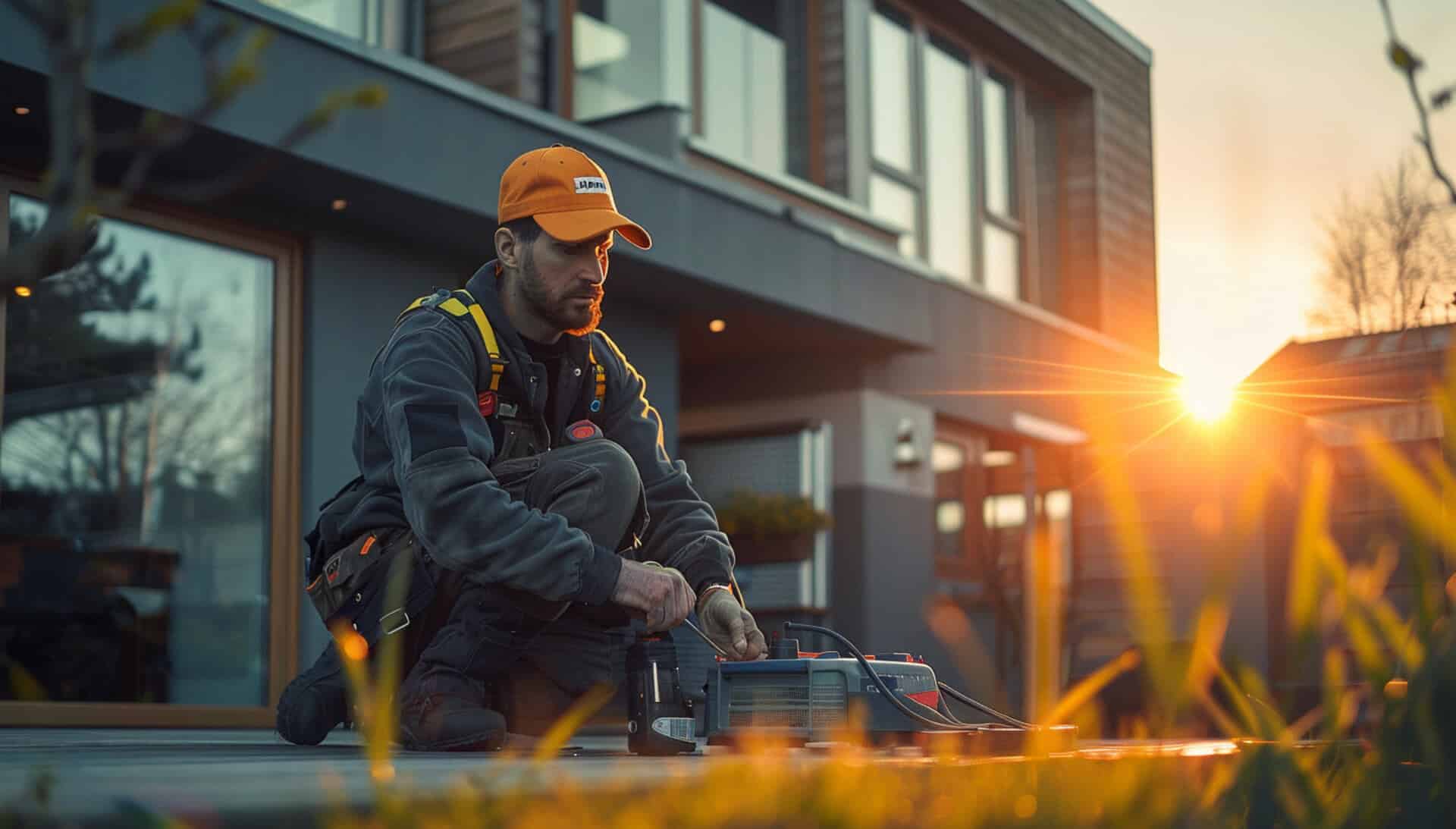
Preventing root intrusion into sewer lines is a proactive approach to maintaining the integrity of your property’s drainage system. There are several strategies that can be employed to mitigate the risk of roots compromising sewer pipes.
Employing Chemical Treatments
Chemical treatments such as sodium chloride and copper sulphate can be effective in deterring root growth into pipes:
- Sodium Chloride: Commonly known as salt, it can create an inhospitable environment for roots when flushed into the sewer line.
- Copper Sulphate: This compound can inhibit root growth without harming the tree when applied correctly.
Strategic Tree Planting
The location of trees plays a significant role in preventing root intrusion:
- Distance from Sewer Lines: Trees should be planted far enough from sewer lines to minimise the risk of roots reaching the pipes.
- Selection of Tree Species: Choosing trees with less aggressive root systems can reduce the likelihood of intrusion.
Regular Inspection of Drainage Systems
Routine inspections are key to early detection of potential root intrusion:
- Inspection Frequency: It is recommended that drainage systems be inspected at least once every two years, or more frequently in areas prone to root intrusion.
- Professional Assessment: Certified drainage specialists can assess the risk and advise on preventive measures.
By implementing these preventive measures, you can significantly reduce the chances of root intrusion and the associated costly repairs. Regular inspections and strategic planning are essential components of effective drainage system maintenance.
Professional Interventions for Root Intrusion
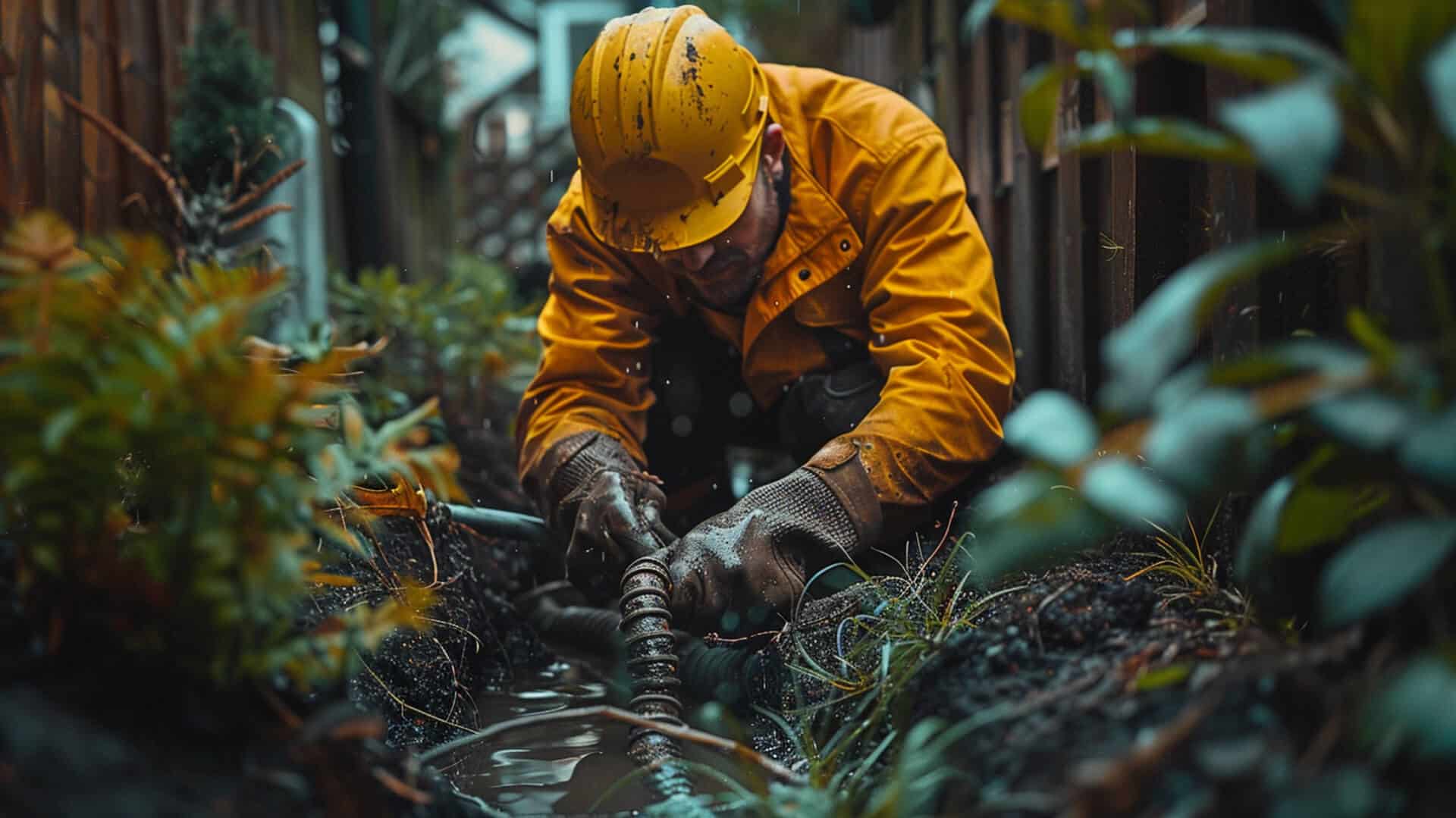
Addressing root intrusion in sewer lines requires professional intervention. Various techniques are available, each suited to different severities and stages of intrusion.
Hydro Jetting and Mechanical Removal
Hydro jetting is a powerful method that uses high-pressure water streams to clear roots and debris from pipes:
- Effectiveness: It is highly effective for removing blockages and accumulated roots.
- Procedure: A specialised nozzle delivers water at high pressures to cut through roots and clean the interior of the pipe.
Mechanical removal involves the use of tools such as drain snakes and augers:
- Drain Snakes: flexible cables that twist through the pipe to dislodge roots and debris.
- Augers: Devices with a rotating head that cut and remove roots from the pipes.
Chemical Treatment as an Alternative
Chemical treatments are sometimes preferred due to their less invasive nature:
- Rooticides: Chemical agents that kill roots without damaging the pipe or surrounding vegetation.
- Situations: Ideal for minor intrusions or as a preventive measure after mechanical clearing.
Selecting a Certified Drainage Specialist
When choosing a professional for root intrusion services, consider the following criteria:
- Certifications: Look for specialists with accreditation from recognised bodies such as the National Association of Drainage Contractors (NADC).
- Experience: Verify the provider’s experience with similar issues and their success rate.
- Customer Reviews: Research feedback from previous clients to gauge satisfaction and service quality.
By selecting a qualified professional and the appropriate intervention method, you can effectively address root intrusion and restore the functionality of your drainage system.
Importance of Regular Drainage Surveys
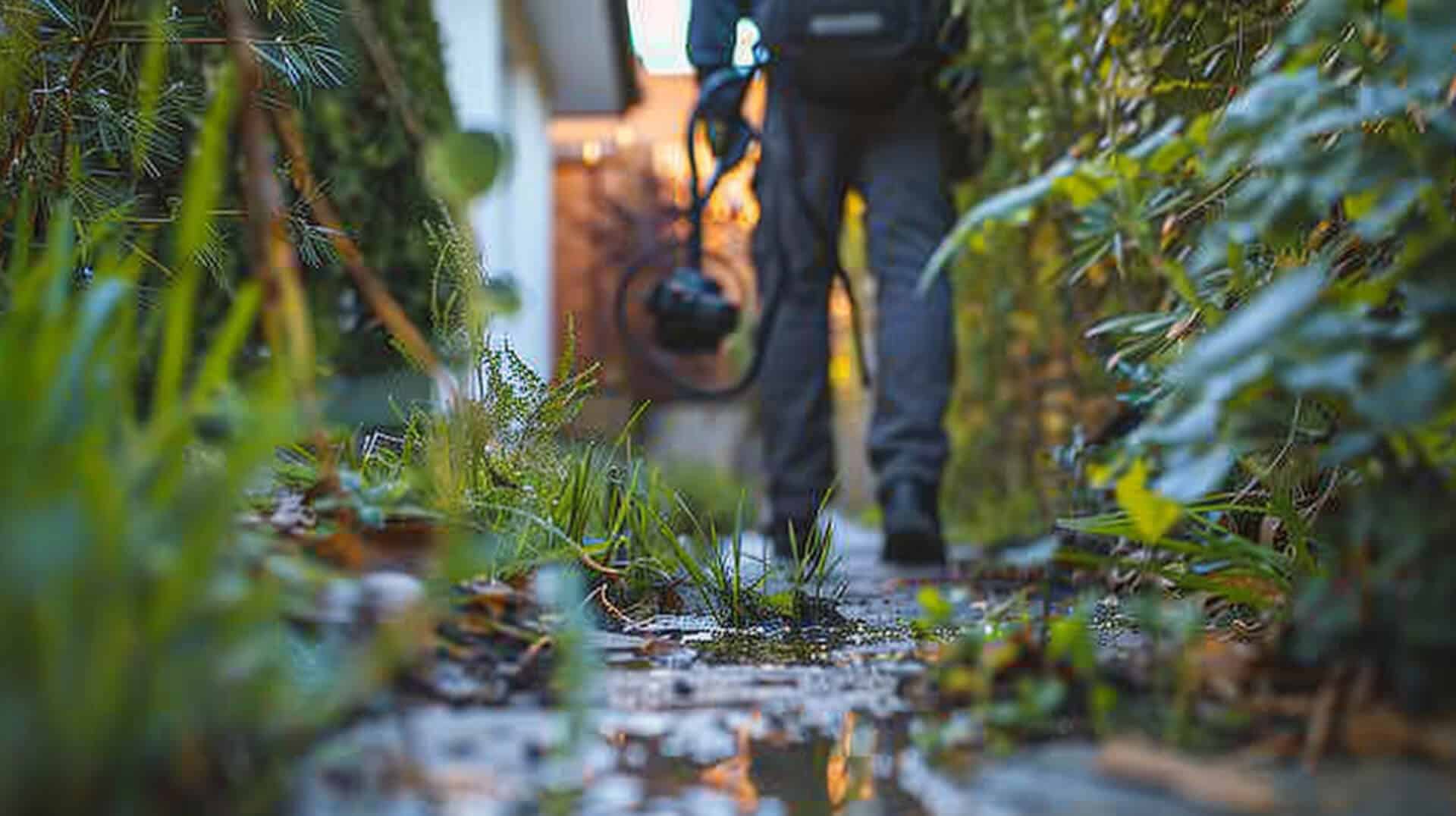
Regular drainage surveys are a critical component of property maintenance, offering both preventative care and long-term cost savings. These surveys are essential for identifying issues before they escalate into more significant problems.
Cost Savings Through Early Detection
By conducting regular surveys, property owners can detect potential root intrusions early, which can:
- Reduce Repair Costs: Early identification often means simpler, less expensive repairs.
- Prevent Major Damage: Addressing issues promptly can prevent extensive damage to the drainage system and property.
Regulatory Compliance and Drainage Surveys
Drainage surveys can also have regulatory implications:
- Building Regulations: Surveys ensure compliance with local building codes and regulations.
- Environmental Standards: They help maintain standards for waste management and environmental protection.
Guiding Drainage System Modifications
Insights from regular surveys guide critical decisions regarding the drainage system:
- System Upgrades: Surveys can inform decisions on upgrading materials or construction to prevent future intrusions.
- Strategic Planning: They provide essential data for planning extensions or renovations that may affect the drainage system.
Regular drainage surveys are a prudent practice for property owners, business owners, and facility managers, ensuring the longevity and reliability of sewer and drainage systems.
Survey Costs and Expert Qualifications
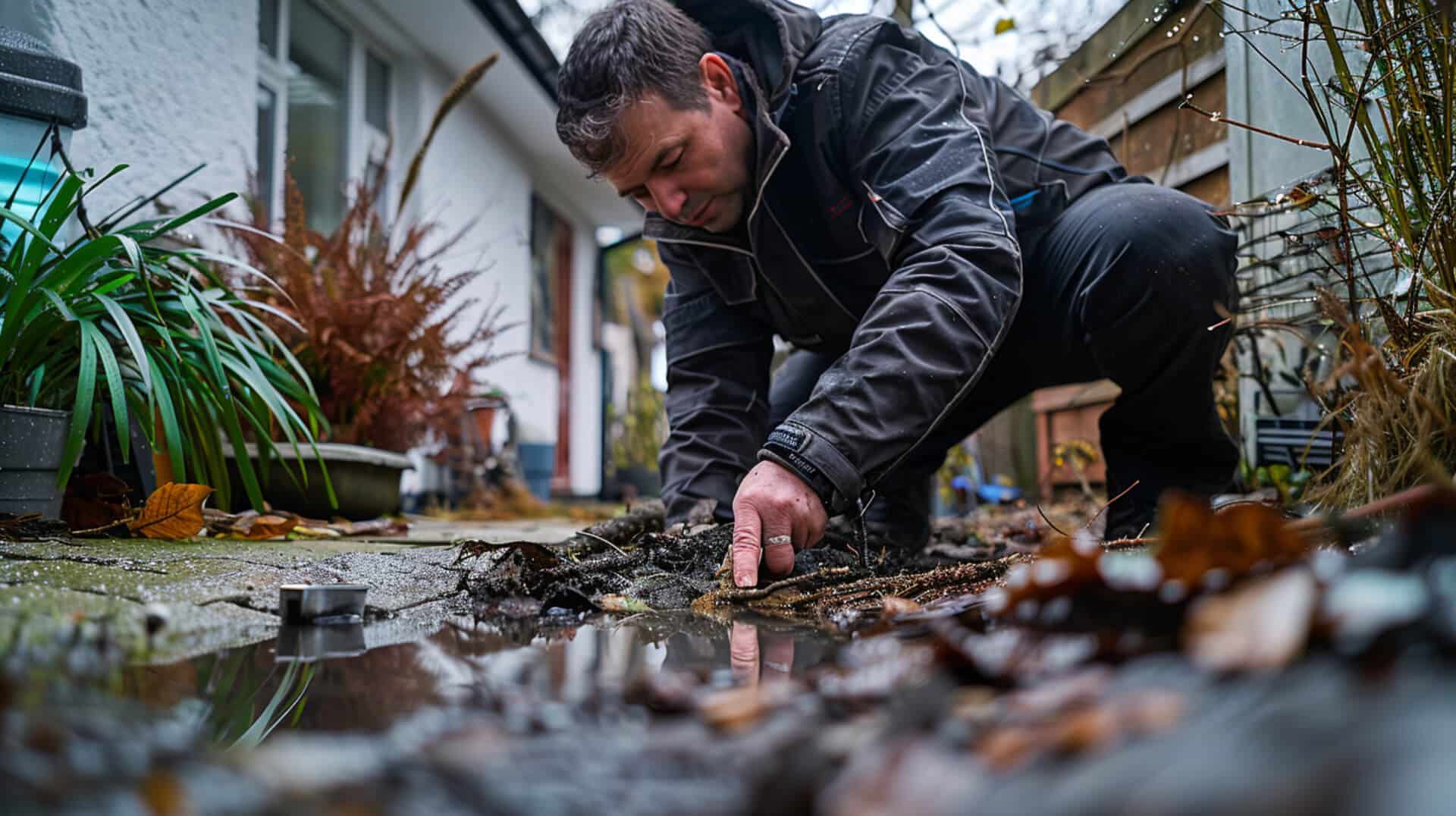
When considering a Drain Root Intrusion Survey, understanding the associated costs and the qualifications of the surveyor is paramount. These factors directly influence the thoroughness and reliability of the survey’s findings.
Understanding Survey Costs
The cost of a Drain Root Intrusion Survey can vary depending on the type of report provided:
- Verbal Reports: Typically around 100, these provide a quick overview of the surveyor’s findings.
- Written Reports: More detailed than verbal reports, written documents usually cost around 150.
- Video Surveys: The most comprehensive option, involving CCTV footage, can cost upwards of 250.
The Importance of NADC Accreditation
Selecting a surveyor with National Association of Drainage Contractors (NADC) accreditation ensures a high standard of service:
- Quality Assurance: NADC accreditation signifies adherence to industry best practices.
- Professional Standards: Accredited surveyors are recognised for their expertise and reliability.
Impact of Surveyor Expertise
The expertise of the surveyor plays a crucial role in the survey’s outcome:
- Diagnostic Precision: Experienced surveyors are more likely to accurately diagnose and assess the extent of root intrusion.
- Recommendations: Qualified professionals can provide more effective solutions and preventive measures.
Essential Training for Surveyors
Professional surveyors should have undergone comprehensive training:
- Technical Skills: Training in the use of CCTV and other diagnostic equipment is essential.
- Safety Protocols: Knowledge of safety standards ensures the survey is conducted without risk to property or personnel.
By choosing a qualified and experienced surveyor, you can trust that your Drain Root Intrusion Survey will be conducted with precision, providing you with the information needed to make informed decisions about your property’s drainage system.
Understanding the Impact of Root Intrusion
Root intrusion into sewer lines can lead to a series of detrimental effects on the drainage system, with significant long-term consequences if left unaddressed.
Consequences of Root Intrusion
When tree roots infiltrate sewer lines, they can cause:
- Blockages: Roots can grow extensively within pipes, obstructing the flow of wastewater and leading to backups.
- Pipe Damage: The force exerted by growing roots can crack or even break sewer pipes, necessitating costly repairs or replacements.
- Reduced Hydraulic Capacity: Intrusive roots diminish the internal diameter of pipes, reducing the volume of water that can pass through, which can lead to frequent overflows during heavy rainfall or usage.
Financial Implications for Property Owners
The financial impact of root intrusion on property owners can be substantial:
- Repair Costs: The expense of repairing or replacing damaged pipes can be significant, especially if excavation is required.
- Property Damage: Overflow and backups caused by blockages can result in water damage to the property, leading to additional repair costs.
- Increased Maintenance: Frequent blockages may necessitate more regular maintenance, adding to the long-term cost of property upkeep.
By understanding the potential impact of root intrusion, property owners can appreciate the importance of proactive measures, such as regular Drain Root Intrusion Surveys, to protect their investment and avoid the high costs associated with reactive maintenance and repairs.
Homeowner Responsibilities for Preventing Root Intrusion
As a homeowner, you have a pivotal role in preventing root intrusion into your sewer lines. Regular maintenance and vigilance can avert the costly consequences of root damage to your property’s drainage system.
Proactive Maintenance to Deter Root Intrusion
To prevent root intrusion, consider the following actions:
- Regular Inspections: Schedule periodic inspections of your sewer lines to detect early signs of root intrusion.
- Strategic Landscaping: Plant trees away from sewer lines and choose species with less aggressive root systems.
The Value of Early Detection
Detecting root intrusion early can significantly reduce repair costs:
- Prompt Response: Addressing root intrusion when signs first appear can prevent more extensive, expensive damage.
- Avoiding Major Repairs: Early intervention often allows for less invasive repair methods, avoiding the need for excavation.
Role of CCTV Surveys in Early Detection
CCTV surveys are a critical tool for early detection of root intrusion:
- Non-Invasive Inspection: These surveys provide a clear view of the interior of sewer lines without the need for digging.
- Accurate Diagnosis: CCTV technology can pinpoint the exact location and severity of root intrusion.
Increasing Awareness of Sewer Pipe Locations
Knowing the location of your sewer pipes is essential:
- Property Maps: Review property blueprints or consult with local utilities to identify sewer line placements.
- Professional Consultation: A certified drainage specialist can help you map out your sewer system for future reference.
By fulfilling these responsibilities, you can protect your property from the disruptive effects of root intrusion and maintain a functional drainage system.
Key Takeaways from Drain Root Intrusion Surveys
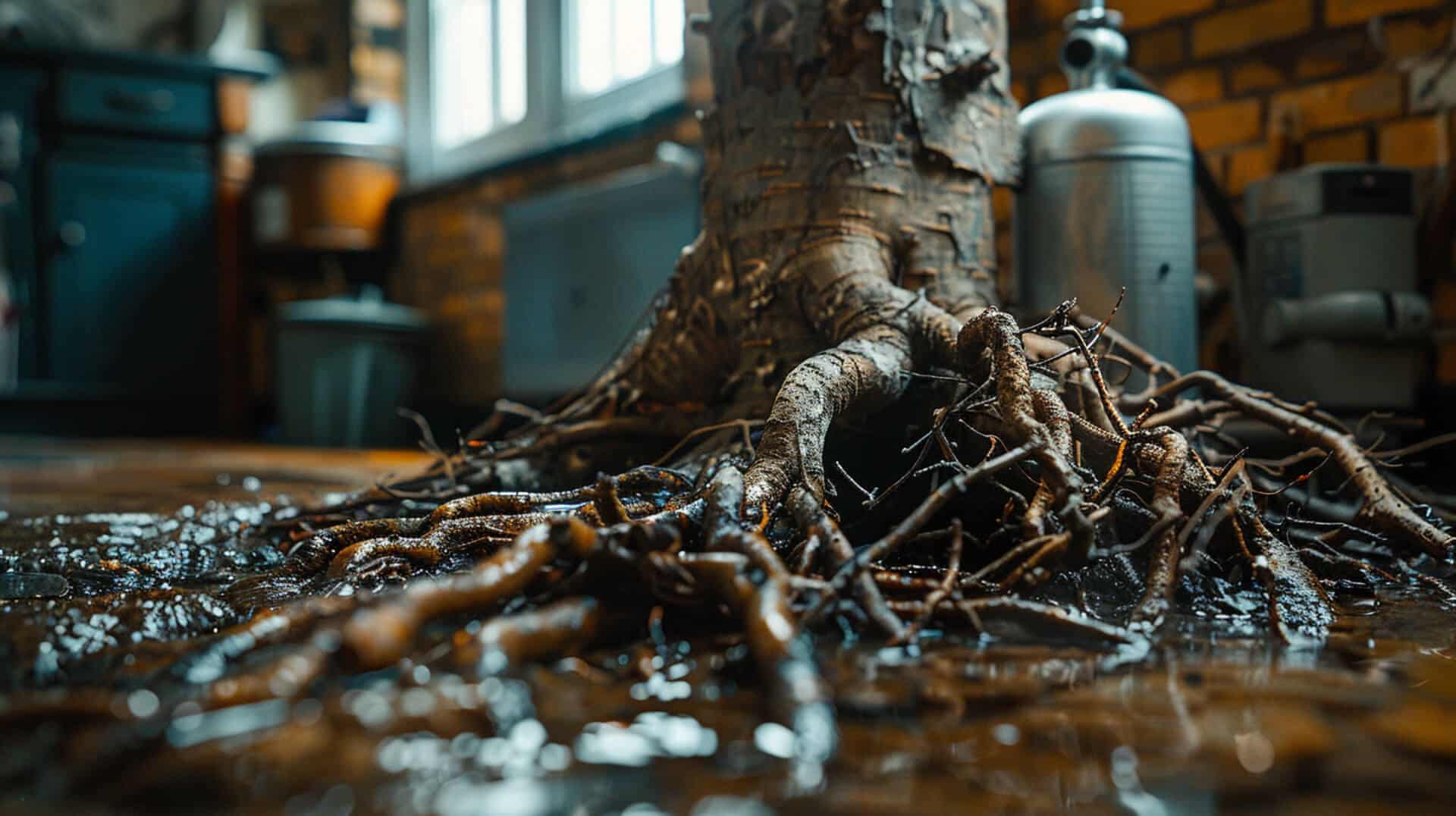
Understanding how a Drain Root Intrusion Survey is conducted equips property owners with the knowledge to proactively manage the risks associated with root intrusion. Here are the essential points to remember:
Proactive Management of Root Intrusion Risks
- Regular inspections and surveys are vital in detecting early signs of root intrusion.
- Strategic landscaping and the use of root barriers can prevent roots from reaching sewer lines.
- Awareness of the location of sewer pipes on your property can guide planting decisions and maintenance activities.
Immediate Actions Upon Detection
Upon detecting signs of root intrusion, it is crucial to:
- Contact a professional for a comprehensive Drain Root Intrusion Survey.
- Avoid using chemical treatments without expert advice to prevent damage to the ecosystem.
Contribution of Regular Surveys to Drainage Health
Investing in regular Drain Root Intrusion Surveys contributes to the overall health of a property’s drainage system by:
- Allowing for timely interventions that can save significant repair costs.
- Preventing severe damage to the infrastructure that can result from unchecked root growth.
By staying informed and vigilant, you can ensure the longevity and efficiency of your property’s drainage system, avoiding the inconvenience and expense of emergency repairs.
